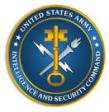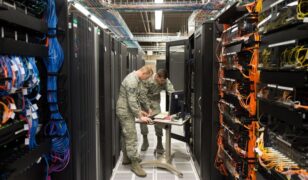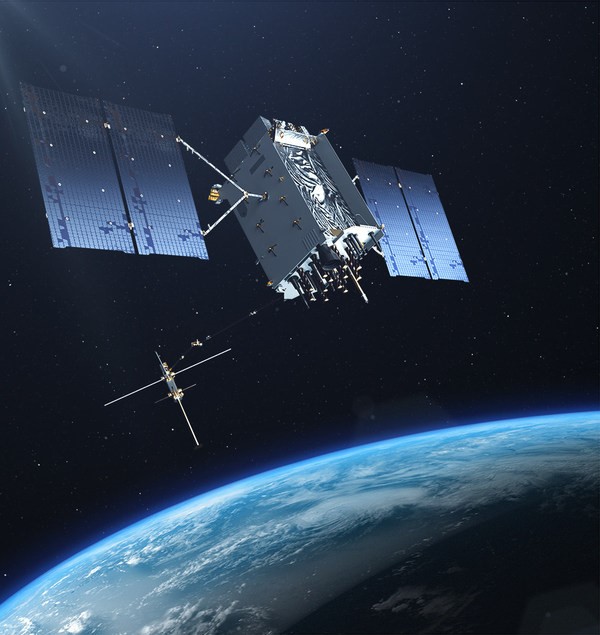INSCOM seeks white papers to address technology needs
 On March 27, the U.S. Army Intelligence and Security Command (INSCOM) posted a notice requesting industry white papers to address the organization’s technical needs (Solicitation Number: W911W4-17-R-0023). Submissions are due on May 28 by 3:00pm Eastern Daylight Time (EDT). Early submissions are highly encouraged.
On March 27, the U.S. Army Intelligence and Security Command (INSCOM) posted a notice requesting industry white papers to address the organization’s technical needs (Solicitation Number: W911W4-17-R-0023). Submissions are due on May 28 by 3:00pm Eastern Daylight Time (EDT). Early submissions are highly encouraged.
G7 executes INSCOM’s materiel and materiel-centric responsibilities as a Capability Developer and as the Army proponent for design and development of select operational level and expeditionary intelligence, cyber, and electronic warfare systems. Within G7, the Integration and Assessment Division (IAD) integrates and assesses mature Commercial-Off-The-Shelf (COTS) using operationally relevant data within a Government test environment to determine if COTS solutions meet INSCOM needs to support Intelligence, Cyber, and Electronic Warfare requirements.
Additional Info: INSCOM G7 has identified areas for which we are requesting White Papers from Industry on mature COTS solutions relevant to the following Focus Areas and requirements:
0001: Open Source Intelligence:
– Voice detection, recognition, and machine translation (voice-to-text) algorithms and a platform to process data at scale to support OSINT and All Source missions.
– Rapid recognition/tracking of individuals in social media as they employ multiple user names or personas, or move to new or pre-planned contingency accounts/platforms.
– Open Source Web Monitoring Capability that provides the capability to monitor foreign web content, to include video, in an integrated user interface with embedded language translation (voice-to-text, text-to-text) and analyst alerting features.
– Capability to audit use of OSINT tools and data to ensure compliance with Intelligence Oversight regulations, laws, and policy. The auditing must provide alerting of questionable intelligence activities.
– Access to non-US data sources for publically available information originating outside the US, in particular, social media websites and popular forums in countries and regions of interest.
– OSINT training and simulation capability to virtualize training on OSINT analytic tools and research methods, to include internet simulation/emulation to drive training scenarios and objectives.
– Automated sentiment analysis capabilities.
– Automated account management capability to issue and manage user accounts in automated/semi-automated fashion, a process currently performed manually.0002: Cyber:
– Software applications that process and exploit blue network data and enable predictive analysis by intelligence analysts in order to support defensive cyber operations.
– Cyberspace tools that support close-access offensive cyberspace operations from the terrestrial and aerial layers in support of land operations to defeat adversary anti-access and area denial efforts.
– Cyberspace tools and platforms capable of conducting surveillance and reconnaissance (C-SR) and delivering non-lethal fires against adversary tactical military communications, critical infrastructure, and ground force vehicle-borne weapon and maneuver systems.0003: Process/Exploit/Disseminate and Big Data:
– Moving Sensor PED to the Sensor Platform.
– Protecting data and against Insider threats.
– Big Data Language Translation.
– Big Data Face Detection and Recognition in Images and Video as a service.
– Improved data streaming/data compression techniques and software that transform raw data into compressed data for transmission over constrained bandwidth or disconnected operations while minimizing loss of fidelity.
– Effective cross-domain solutions that allow dissemination of data across security domains.
– Effective data translation algorithms to transform similar data sets (particularly geospatial data sets produced by different countries) that are not completely compatible/interoperable.
– Analytic and Visualization Tools that support Big Data Analytics at the point of ingestion, data indexing and correlation, efficient processing, storage, and/or exploitation of data, automated text translation of data, Situational Awareness and Common Operational Picture.0004: Other:
– Comprehensive Counter-UAS capability to support all echelons of Army Operations.
– Modern Collection capabilities to counter rapidly evolving technology, with the ability to collect and process multi-discipline, multi-modal, multi-phenomena data to detect, track, and understand adversary behavior, capabilities, and intentions by exploiting traditional data and/or exploiting new phenomenon such as behavioral biometrics, social media, and the internet of things.
– Collection Management Modernization capability that supports the rapid assessment and re-deployment of collection systems to maximize capabilities of both organic assets and other available resources including a Sensor Common Operating Picture (COP) that displays the location, status, and effectiveness of assets.
– Solutions for a non-GEO satellite low-profile planar antenna that provides the capability for satellite switching, that can operate in the Commercial and Military Ka-bands, provide a minimum of 20Mbps throughput, and weight and power no more than the current 17 inch parabolic antennas used on current Army ISR aircraft.
– Smaller, lighter, smarter, modular AISR sensors.
– Integrated multi-function display with COMSEC port capable of loading mapping data.
– Real-time network monitoring capability to identify threat vectors.
– Long Range Key Printer and software program to decode keys to physically create a key from a long range photo regardless of the angle, distance, or lighting.
– Lock Tampering detection software supports determination of how a lock was tampered with based on the detected changes from the lock’s baseline.
Full information is available here.
Source: FedBizOpps








